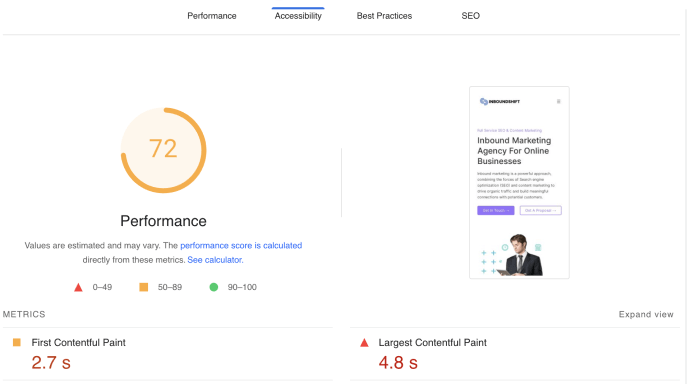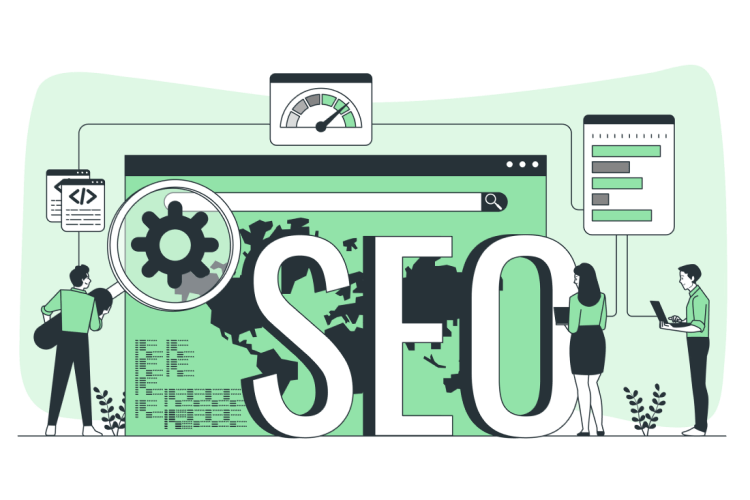The digital landscape is continuously evolving, with on-page SEO at the forefront of creating visible and high-ranking websites.
This is particularly crucial for B2B SaaS companies and startups, where the competition to stand out online is intense.
Effective on-page SEO not only boosts your website’s visibility but also significantly improves user engagement and conversion rates.
Understanding On-Page SEO
On-page SEO involves optimizing web page content for search engines and users.
Unlike off-page SEO, which deals with external signals like backlinks, and technical SEO, which focuses on a website’s backend elements, on-page SEO is all about what you can control directly on your website.
This includes content, HTML source code, and the website’s architecture, providing a foundation to build your online presence.
Core On-Page SEO Techniques
On-page SEO is a critical component for enhancing your website’s visibility and ranking in search engine results.
It involves optimizing various elements on your website to make it more appealing to search engines and users alike. Here’s a detailed overview of effective on-page SEO techniques:
1. Creating Comprehensive and Relevant Content
The key to successful on-page SEO is creating content that is exhaustive and directly relevant to your target audience’s needs. It’s essential to cover subtopics that are crucial to the main topic, even if they don’t seem to directly contribute to your keyword rankings. Providing valuable information that helps the reader will naturally improve your search rankings.
2. Linking to Relevant Resources
To make your content comprehensive without making it overly lengthy, it’s beneficial to link to other useful resources, both internally within your site and to external authoritative sources. Internal links help search engines understand your site structure and content hierarchy, while external links can provide additional context and authority to your content
.
3. Structuring Content Logically
Organizing your content with clear, logical headers not only improves readability for users but also helps search engines understand the main points and structure of your content. Utilizing HTML header tags effectively can guide both readers and search engine bots through your content, making it easier to digest and index.
4. Visual Enhancements and Featured Snippets
Incorporating images, bullet points, and lists can break up text and make your content more engaging and easier to scan. Optimizing images with descriptive file names and alt text can also contribute to image search visibility. Additionally, structuring content to target featured snippets can give your content a significant visibility boost, positioning it at the very top of search results.
5. Utilizing Descriptive URLs and Meta Data
A short, descriptive URL that reflects the core topic of the page can enhance user understanding and confidence in the relevance of your content. Similarly, optimizing your title tags, meta descriptions, and headers with target keywords can improve your content’s visibility and relevance in search results. These elements should accurately reflect the content’s focus and entice users to click through from the search results page.
6. Image Optimization and Internal Linking
Optimizing images for SEO is not just about reducing file sizes to improve page load speed; it also involves using descriptive file names, alt text, and sometimes captions to enhance their discoverability in image searches. Moreover, strategic internal linking within your site can boost page authority and help search engines and users navigate your site more effectively.
7. Continuous Optimization
On-page SEO is not a one-time task but a continuous process of improvement and optimization. Regularly updating your content, monitoring your keyword rankings, and staying abreast of SEO best practices can ensure that your site remains competitive and relevant in the ever-changing landscape of search engine algorithms.
8. Page Experience Signals

Google’s emphasis on page experience signals, including Core Web Vitals, underscores the importance of creating a seamless user experience to maintain high search rankings.
Implementing these on-page SEO techniques can significantly impact your website’s performance in search results, driving more traffic and engagement to your site. It’s about balancing the needs of your users with the technical requirements of search engines to create content that is not only visible but also valuable and engaging.
SEO Best Practices
SEO best practices encompass a range of strategies aimed at improving a website’s visibility and ranking on search engine results pages. Here’s a comprehensive overview of some of the most effective SEO best practices:
1. Content and Keywords:
It’s essential to match your content with search intent, ensuring your web pages meet the needs of your audience and search queries. Utilizing target keywords in key places such as the title tag, headings (H1 tags), and URLs can significantly enhance relevance and search visibility.
2. Domain and Hosting:
Choosing a short, memorable domain name without forcibly including keywords can benefit your SEO. Opting for a .com TLD is usually best due to its recognizability and trust. A good web host should provide essential features like security, optimal server location, and reliable support, contributing to site performance and user experience.
3. Website Platform and Structure:
Using a flexible and SEO-friendly website platform like WordPress can aid in customization and extension through plugins, including those for SEO. Creating a positive user experience and a logical site structure facilitates easier navigation for both users and search engines, enhancing the site’s SEO performance.
4. On-Page Optimization:
Regularly refreshing outdated content can maintain or improve your rankings. Title tags should be optimized to attract clicks, and images should be optimized for search visibility. Employing techniques such as using descriptive, concise URLs and internal linking can bolster page authority and user navigation.
5. Technical SEO:
Improving Core Web Vitals is crucial as these metrics influence user experience and can impact rankings. Redirecting similar pages and consolidating their content can help concentrate authority and enhance ranking potential.
Creating comprehensive content that covers relevant subtopics can also increase the chances of ranking for a wider array of search queries.
6. Backlink Acquisition:

Using services like HARO can connect you with journalists and earn you authoritative backlinks. Compiling industry statistics and including expert quotes in your content can also attract backlinks, enhancing your site’s authority and trustworthiness in the eyes of search engines.
By adhering to these SEO best practices, you can create a more search engine-friendly website that not only ranks better but also provides a superior user experience.
On-Page SEO for B2B SaaS and Startups
B2B SaaS companies and startups must tailor their on-page SEO strategies to meet specific industry needs. This includes focusing on niche keywords, avoiding jargon unless necessary, and addressing user intent. Sharing success stories and case studies can also illustrate the impact of well-executed on-page SEO.
Conclusion
On-page SEO is a vital component of a successful digital marketing strategy, especially for B2B SaaS companies and startups looking to differentiate themselves in a crowded marketplace.
By focusing on quality content, user experience, and continuous improvement, businesses can achieve sustainable growth and a strong online presence..
Read More:


Leave a Reply